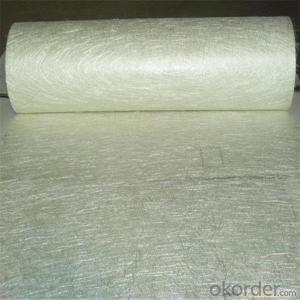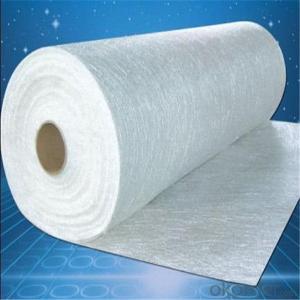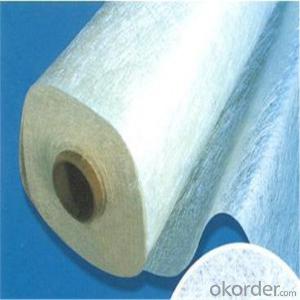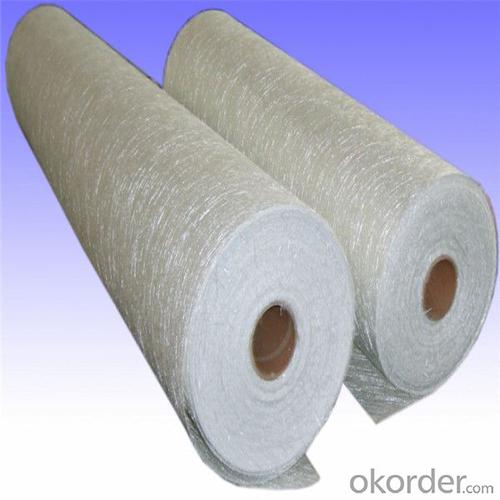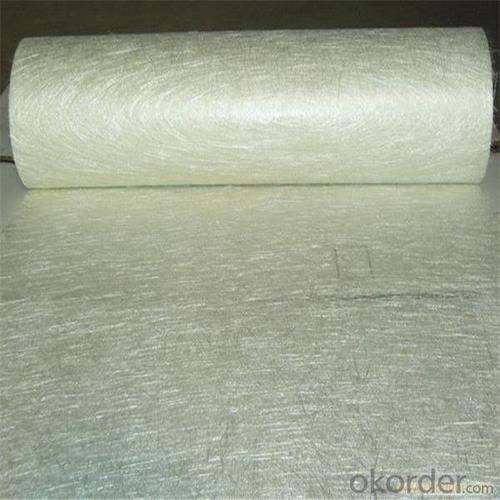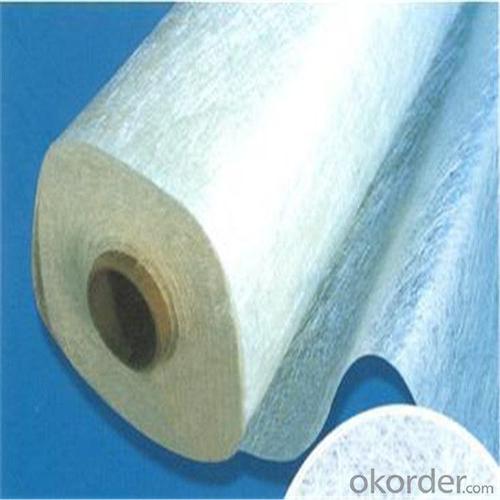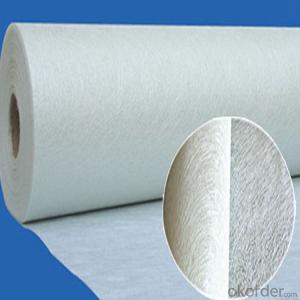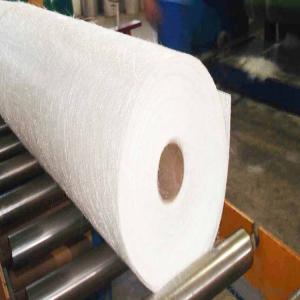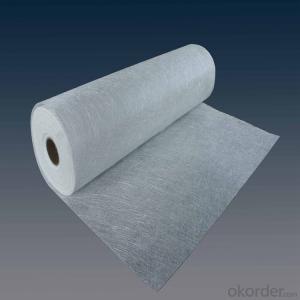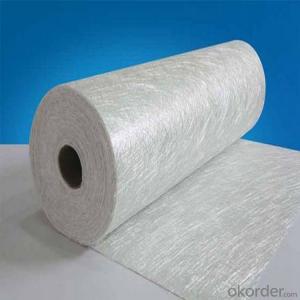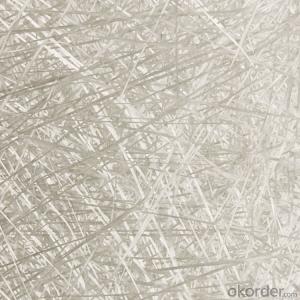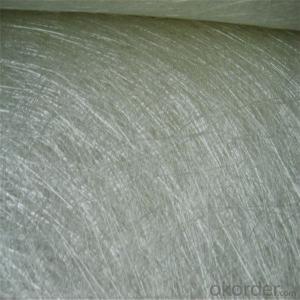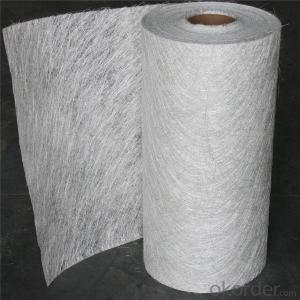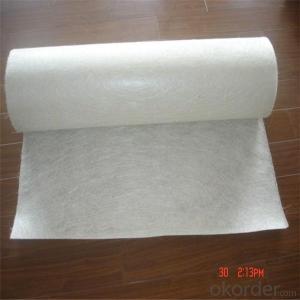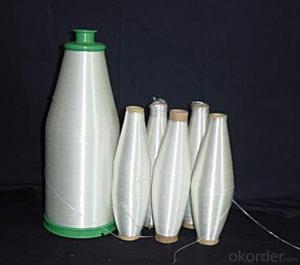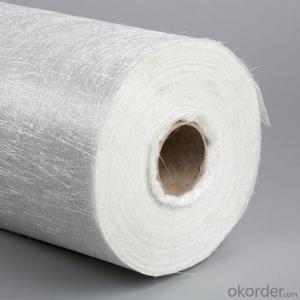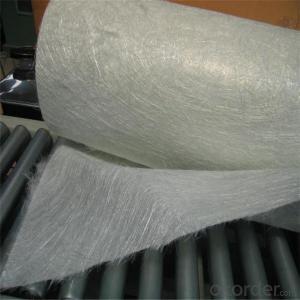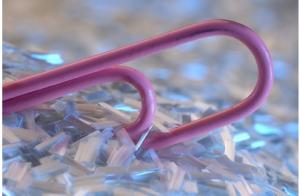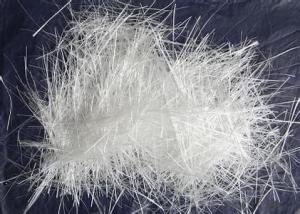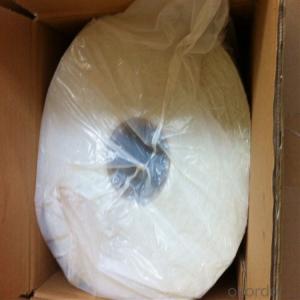Fiberglass Chopped Strand Mat Cloth E-Glass Fiberglass Chopped Strand Mat for Ceiling
- Loading Port:
- Tianjin
- Payment Terms:
- TT OR LC
- Min Order Qty:
- 100 m.t.
- Supply Capability:
- 20000 m.t./month
OKorder Service Pledge
Quality Product, Order Online Tracking, Timely Delivery
OKorder Financial Service
Credit Rating, Credit Services, Credit Purchasing
You Might Also Like
Quick Details
| Technique: | Chopped Strand Fiberglass Mat (CSM) | Dimensions: | 450gsm | Mat Type: | Continuous Filament Mat |
| Fiberglass Type: | E-Glass | Softness: | softness | Place of Origin: | Jiangxi, China (Mainland) |
| Brand Name: | cnbm | Model Number: | 450gsm | color: | white |
| fiberglass type: | E glass | product: | e-glass powder chopped stand mats | binder: | powder or emulsion |
| width: | 1040 or 1270mm, as your requirement | weight: | 30 or 45kg/roll | paper tube diameter: | 90mm |
| outer diameter of roll: | 256mm | packing: | plastic film+carton box + pallet |
Packaging & Delivery
| Packaging Details: | plastic film+carton box + pallet |
| Delivery Detail: | 15-20days |
Specifications
1.e-glass powder chopped stand mats
2.binder:power or emulsion
3.width:1040mm or 1270mm
4.weight:450gsm
Picture
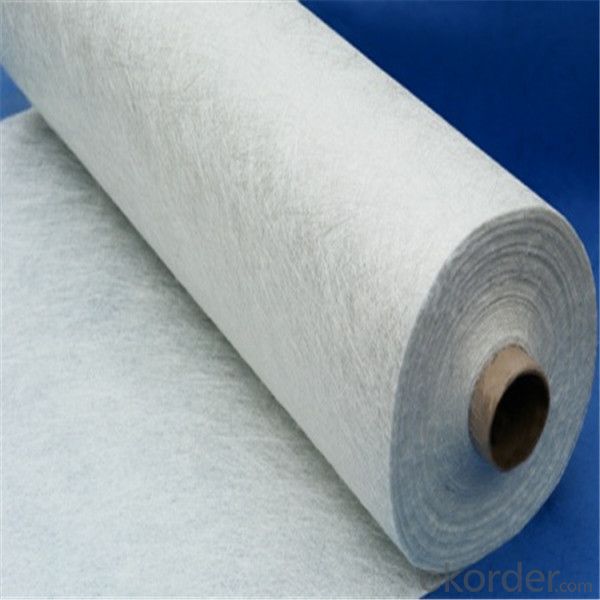
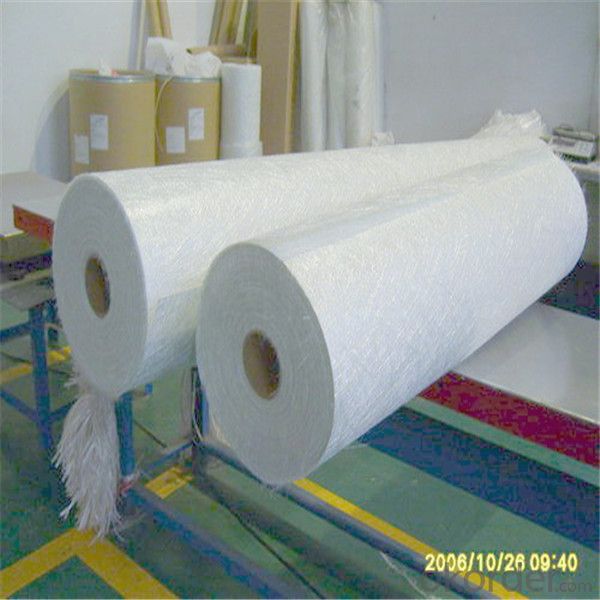
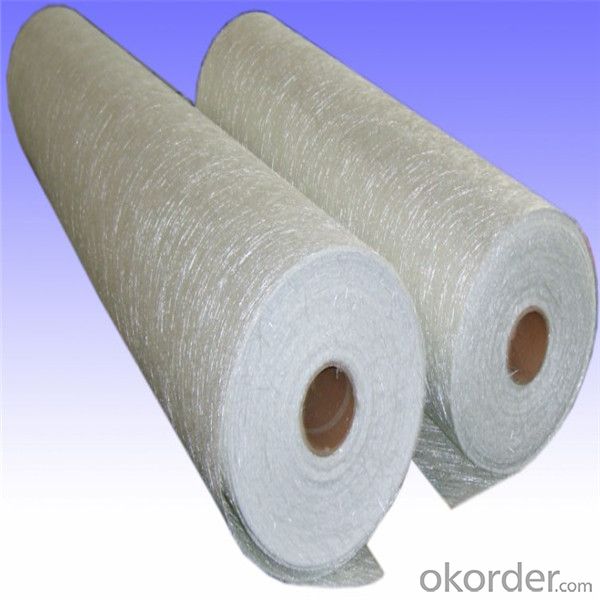
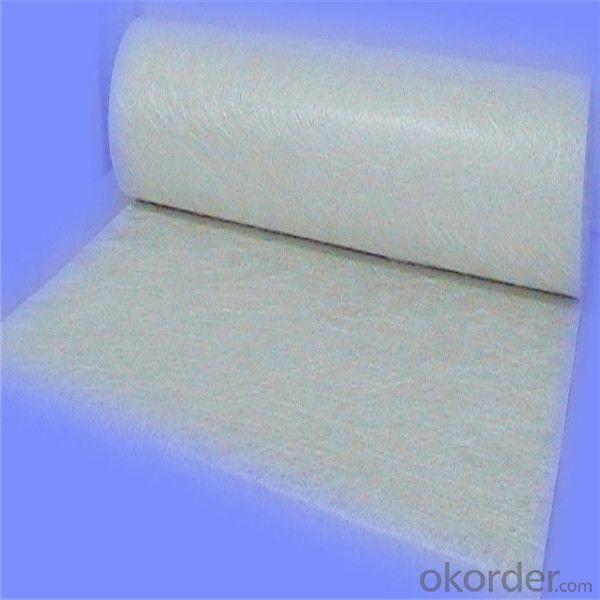
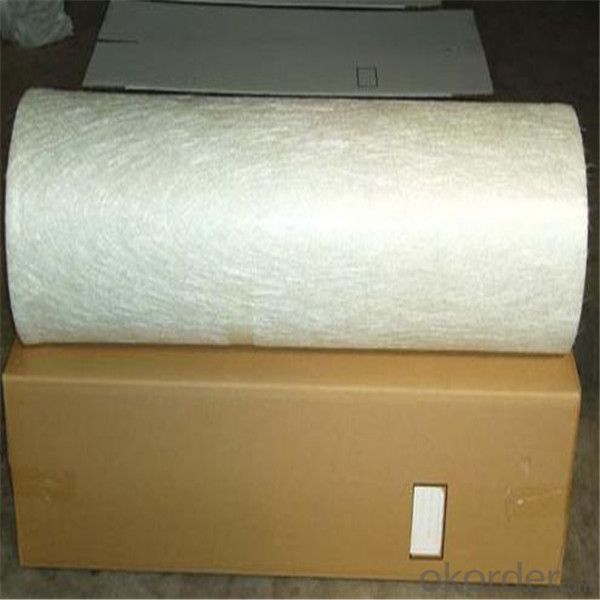
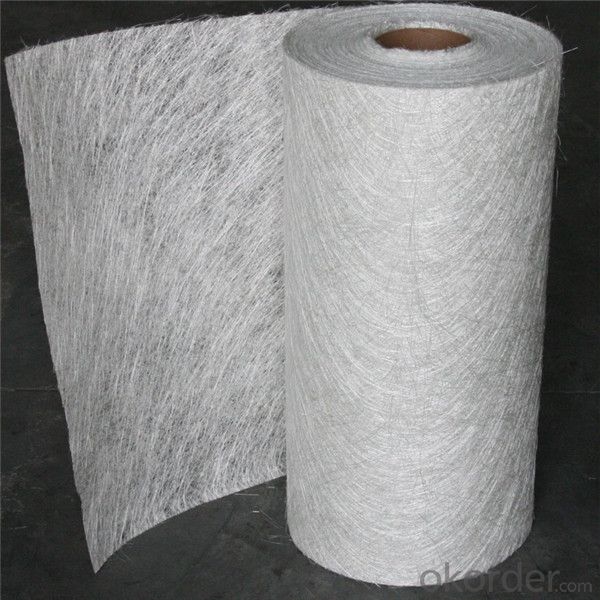
- Q: What are the advantages of using fiberglass chopped strand?
- There are several advantages of using fiberglass chopped strand. Firstly, it offers excellent strength and stiffness properties, making it a popular choice for reinforcing materials in various industries such as automotive, construction, and aerospace. Secondly, it has a high resistance to corrosion, chemicals, and moisture, making it highly durable and long-lasting. Additionally, fiberglass chopped strand is lightweight, making it easier to handle and transport. It also offers good thermal and electrical insulation properties. Furthermore, it has excellent dimensional stability and can be easily molded into complex shapes. Overall, the use of fiberglass chopped strand provides a cost-effective solution with numerous benefits in terms of strength, durability, and versatility.
- Q: How is fiberglass chopped strand incorporated into a composite material?
- Fiberglass chopped strand is commonly incorporated into a composite material through a process called impregnation or infusion. In this process, the chopped strand is mixed with a resin, usually a thermosetting resin like polyester or epoxy, to create a matrix material. The resin acts as a binder, adhering the fibers together and providing strength and rigidity to the composite. During the impregnation process, the chopped strand is evenly dispersed within the resin, ensuring that the fibers are fully coated and saturated. This is typically achieved through mechanical agitation, such as using a mixer or blender, to ensure a uniform distribution of the fibers throughout the resin. Once the chopped strand is fully impregnated with the resin, the composite material is ready for further processing. It can be shaped into various forms such as sheets, panels, or molded into specific geometries. The material is then cured or hardened, usually through the application of heat or the use of a catalyst, to solidify the resin and create a durable composite structure. The incorporation of fiberglass chopped strand into a composite material offers several advantages. The fibers provide excellent strength and stiffness, improving the overall mechanical properties of the composite. They also enhance impact resistance, dimensional stability, and resistance to corrosion and weathering. Furthermore, the chopped strand reinforces the composite, making it more resistant to cracking and delamination. The fibers also help to distribute and dissipate loads more efficiently, making the composite material more reliable and durable. Overall, the incorporation of fiberglass chopped strand into a composite material is a crucial step in the manufacturing process, as it significantly enhances the mechanical properties and performance of the final product.
- Q: How does the length of the chopped strand affect its performance?
- The length of the chopped strand can significantly affect its performance in various applications. Chopped strands are typically used as reinforcements in composite materials, such as fiberglass, to enhance their strength and durability. The length of the chopped strand has a direct impact on its mechanical properties. Longer strands tend to provide higher tensile strength and stiffness, leading to improved structural integrity of the composite material. They also offer better resistance to crack propagation and deformation under load, making them suitable for applications requiring high strength, such as automotive components or construction materials. On the other hand, shorter chopped strands are more easily dispersed and distributed within the matrix, resulting in better interfacial bonding between the strands and the resin. This enhanced bonding improves the overall performance of the composite by increasing its resistance to delamination and improving its impact resistance. Shorter strands are commonly used in applications that require improved toughness and impact resistance, such as boat hulls or sports equipment. Therefore, the length of the chopped strand should be carefully chosen based on the specific requirements of the desired application. Factors such as the desired mechanical properties, processing conditions, and cost considerations should be taken into account when selecting the appropriate length of the chopped strand to achieve optimal performance.
- Q: Is fiberglass chopped strand resistant to UV degradation?
- Yes, fiberglass chopped strand is generally resistant to UV degradation. Fiberglass is known for its excellent durability and high resistance to various environmental factors, including UV radiation. The glass fibers used in fiberglass chopped strand are typically coated with a protective finish or sizing that provides additional UV resistance. This coating helps to shield the fibers from the damaging effects of UV rays, thereby prolonging the lifespan of the fiberglass material. However, it is important to note that prolonged exposure to intense UV radiation may still cause some degree of degradation over time. Therefore, it is recommended to use additional protective measures, such as applying UV-resistant coatings or using fiberglass materials in shaded areas, to further enhance their UV resistance.
- Q: Is fiberglass chopped strand suitable for the production of sports equipment?
- Yes, fiberglass chopped strand is suitable for the production of sports equipment. Fiberglass is a lightweight and durable material that offers high strength-to-weight ratio, making it an excellent choice for various sports equipment. It provides excellent impact resistance, stiffness, and flexibility, making it suitable for applications such as tennis rackets, hockey sticks, bicycle frames, and surfboards. Additionally, fiberglass is corrosion-resistant and can withstand harsh weather conditions, making it ideal for outdoor sports equipment. Its versatility allows manufacturers to design and produce sports equipment with specific performance requirements, making fiberglass chopped strand an excellent choice for the production of sports equipment.
- Q: What are the chemical compatibility properties of fiberglass chopped strand?
- Fiberglass chopped strand possesses exceptional chemical compatibility properties, rendering it a versatile material. It exhibits remarkable resistance against the majority of chemicals, effectively safeguarding against corrosion and degradation. Its inertness towards an extensive array of acids, alkalis, and solvents enables its application in diverse industrial settings. It can endure exposure to commonly used chemicals such as hydrochloric acid, sulfuric acid, sodium hydroxide, and numerous organic solvents. Furthermore, fiberglass chopped strand displays a high resistance to water and moisture, thereby enhancing its chemical compatibility. It remains impervious to water absorption or swelling, ensuring its structural integrity even in humid or wet environments. The chemical compatibility of fiberglass chopped strand also extends to its resilience against UV radiation and weathering. It withstands exposure to sunlight and extreme weather conditions without degrading or discoloring, making it an enduring choice for outdoor applications. Ultimately, the chemical compatibility properties of fiberglass chopped strand establish it as a trustworthy and long-lasting material, capable of enduring a broad range of chemicals and environmental conditions.
- Q: What are the quality control measures for fiberglass chopped strand production?
- Quality control measures for fiberglass chopped strand production involve several steps to ensure the production of high-quality products. These measures include: 1. Raw Material Inspection: Before production, the raw materials used for fiberglass chopped strand production, such as glass fibers and resins, are thoroughly inspected for their quality and conformity to specifications. This ensures that only the best materials are used in the manufacturing process. 2. Process Control: During the production process, various parameters are closely monitored and controlled to maintain consistency and quality. This includes controlling the temperature, pressure, and speed of the machinery used in the manufacturing process. Regular checks and adjustments are made to ensure that the production parameters are within the specified range. 3. Sampling and Testing: Regular sampling of the chopped strands is done at different stages of the production process. These samples are then subjected to various tests to assess their mechanical properties, such as tensile strength, flexibility, and dimensional stability. This helps in identifying any deviations from the desired quality standards and taking corrective actions. 4. Quality Checks: Finished products are thoroughly inspected for their appearance, dimensions, and other physical properties. This ensures that the chopped strands meet the required specifications and are free from any defects or impurities. Visual inspections, as well as specialized testing equipment, may be used to verify the quality of the products. 5. Documentation and Traceability: Each batch of fiberglass chopped strands is assigned a unique identification number, which allows for traceability and tracking of the product throughout the manufacturing process. This helps in identifying any issues or discrepancies and enables prompt corrective actions. 6. Continuous Improvement: Quality control measures are not limited to the production process alone. Feedback from customers, as well as internal audits and inspections, are used to identify areas for improvement. This helps in implementing corrective and preventive actions to enhance the overall quality control system. By implementing these quality control measures, manufacturers can produce fiberglass chopped strands that meet or exceed the required standards and customer expectations. This ensures the reliability, durability, and performance of the final products, making them suitable for various applications in industries such as automotive, construction, and aerospace.
- Q: What are the environmental impacts of using fiberglass chopped strand?
- The environmental impacts of using fiberglass chopped strand can vary depending on various factors. However, some potential environmental impacts include the extraction and processing of raw materials required for fiberglass production, which can contribute to habitat destruction, soil erosion, and water pollution. Additionally, the manufacturing process itself can release harmful air pollutants and greenhouse gases. Moreover, fiberglass waste disposal can pose challenges as it is not easily biodegradable, potentially leading to long-term accumulation in landfills. Nevertheless, advancements in fiberglass recycling and the use of more sustainable production methods can help mitigate these environmental impacts.
- Q: How does the size of fiberglass chopped strand affect its performance?
- The performance of fiberglass chopped strand can be significantly influenced by its size. Generally, larger chopped strands contribute to increased strength and stiffness in the final composite material. This is because longer strands provide more opportunities for interlocking and bonding with the resin matrix, resulting in a stronger overall structure. On the contrary, smaller chopped strands enhance the surface finish and flowability of the resin during the manufacturing process. They can easily fill intricate molds and complex shapes, resulting in a smoother surface. Smaller strands also have better wetting properties, ensuring better adhesion between the fibers and the resin matrix. However, it is worth noting that the optimal size of chopped strand depends on the specific application and the desired properties of the final product. For instance, in applications where high strength is crucial, such as in structural components, longer strands are preferred. Conversely, in applications where surface finish and aesthetics are important, smaller strands are more suitable. In conclusion, the size of fiberglass chopped strand plays a vital role in determining its performance characteristics. Choosing the appropriate size is essential to achieve the desired mechanical properties, surface finish, and overall performance of the composite material.
- Q: What are the different lengths available for fiberglass chopped strand?
- Fiberglass chopped strand is available in a variety of lengths to suit different applications and needs. The most common lengths for fiberglass chopped strand range from 1/8 inch (3.2 mm) to 2 inches (50.8 mm). However, shorter lengths such as 1/16 inch (1.6 mm) or longer lengths exceeding 2 inches (50.8 mm) may also be available depending on the manufacturer and specific requirements. The choice of length depends on several factors including the desired strength, thickness, and flexibility of the final product. Shorter lengths are often used for applications requiring improved surface finish and dimensional stability, such as in panel and sheet molding compounds. Longer lengths, on the other hand, are typically used for applications requiring higher strength and reinforcement, such as in fiberglass-reinforced plastics or composite materials. It is important to note that the length of the fiberglass chopped strand can significantly impact the performance and characteristics of the final product. Therefore, it is advisable to consult with the manufacturer or supplier to determine the most suitable length for your specific application.
Send your message to us
Fiberglass Chopped Strand Mat Cloth E-Glass Fiberglass Chopped Strand Mat for Ceiling
- Loading Port:
- Tianjin
- Payment Terms:
- TT OR LC
- Min Order Qty:
- 100 m.t.
- Supply Capability:
- 20000 m.t./month
OKorder Service Pledge
Quality Product, Order Online Tracking, Timely Delivery
OKorder Financial Service
Credit Rating, Credit Services, Credit Purchasing
Similar products
Hot products
Hot Searches
Related keywords

